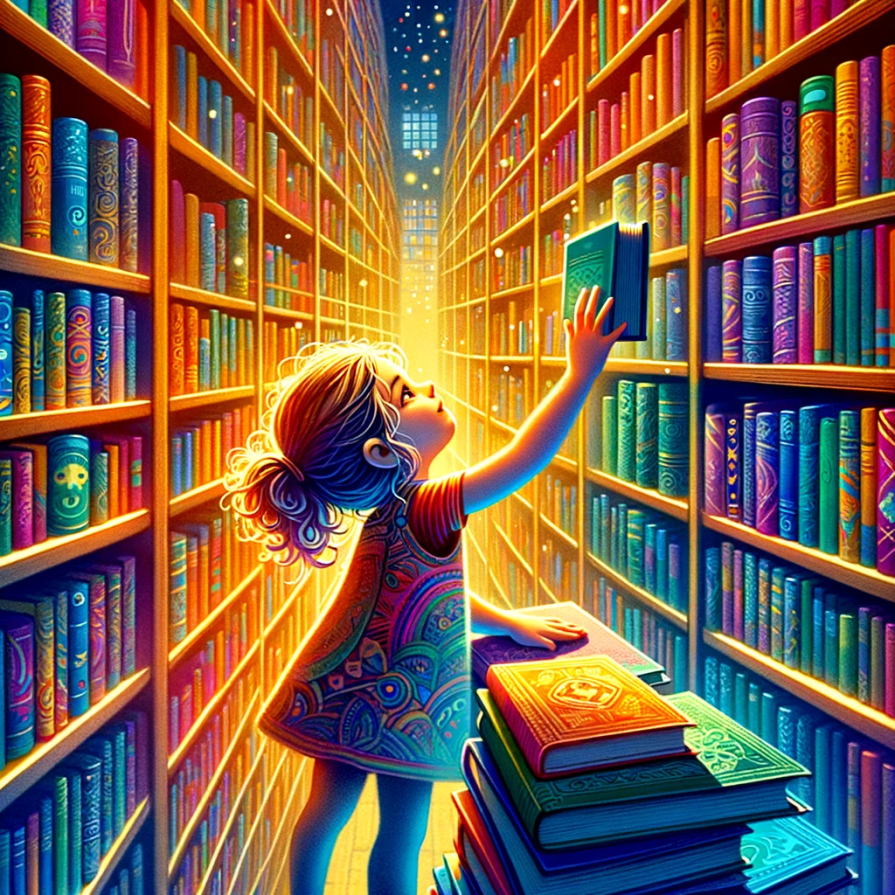As a product manager, you wear many hats, and your role is very complex, but in the end, it all boils down to building products that bring value to your users by solving their problems.

Albert Einstein famously said, “If I had an hour to solve a problem I’d spend 55 minutes thinking about the problem and five minutes thinking about solutions.” I believe that spending enough time to understand the underlying problems of your users is the key to success in product management. One of the best ways to do this is through the problem space.
In this article, you’ll learn what the problem space is and how you can use it to help deliver great products.
Take a minute to look at the picture below and answer the following question: what does the girl in the picture need?

When I asked my team this question, the first answers I got were along the following lines:
All the above answers are possible solutions to problems you think the little girl has.
After I received these answers I kept asking why until we got to the underlying problem or need. The little girl is in search of knowledge.
It’s human nature to jump directly to solutions whenever someone has a problem or asks you questions, but when working on products, you’re actually aiming to bring value to your users so that you can make money. And when you think of value, you can either look for underlying problems people may have, or try to address some needs. What kind of needs?
Bain & Company has boiled this down to 30 Elements of Value that consumers consider when evaluating a product’s value. They fall into four categories: functional, emotional, life-changing, and social impact and are rooted in Maslow’s pyramid of human needs. The more elements of value you address, the more likely it is for a consumer to buy your product.
Similarly, Bain also developed the B2B Elements of Value, which defines categories of value that businesses value more. These fall into a few categories: table stakes, functional value, ease of doing business value, individual value, and inspirational value.
The elements of value are a good starting point for thinking in terms of value, but in order to find out what your target audience’s elements of value are, you actually need to get out of the house. This is where design thinking comes into play.
Design thinking is a term that first appeared in the 1950s and 1960s when attempts were made to make the practice of design more scientific. It was popularized by IDEO starting in the 1990s and by Stanford’s d.school, which was founded in 2004.
At the center of design thinking is the double diamond principle, which implies that in order to find a solution to a real-world, complex problem, one first needs to explore the problem space through research and be close to the people who experience that problem. Once you do this, you then go into the solution space by ideating possible ideas, prototyping, and testing them to find out what is the best one:

The design thinking has five steps: empathize, define, ideate, prototype, and finally, test.
The first step in the process is to have your team work to understand the users. This can be done through surveys, interviews, or observation. The main goal is to interact with the users and learn more about their stories, contexts, and needs. While secondary research can be helpful, I highly recommend getting hands-on with the users and going out to meet them in person. Otherwise, you may end up making assumptions, which can lead you to the wrong solutions.
After collecting your research data, it’s time to organize and present your findings in a clear and compelling way. You can use tools like a user persona or user journey mapping to help with this process. The ultimate goal is to identify a single challenge or need that your team wants to focus on for future work. This will be summarized in a problem statement.
Following this, you exit the problem space and enter the solution space.
During the ideation stage, any idea is welcome. To foster creativity, techniques such as TRIZ innovation tactics, SCAMPER ideation technique, crazy 8s, and brainwriting can be useful. The Interaction Design Foundation has a great resource on ideation techniques.
The ideation process then transitions to the prototyping phase, where one solution is selected to be rapidly prototyped and tested with real users. This is a key moment in the process, as it helps you validate your assumptions and determine whether what you have designed is meaningful to the user and whether it provides genuine value.
Now, let’s take a closer look at techniques for exploring the problem space. As alluded to prior, the design thinking process always starts with the empathy phase. This is the step where you want to get out of the house and better understand your users through research.
First, you need to define your challenge or hypothesis. According to Jake Knapp’s book “Sprint” this can be achieved by asking “how might we (MHW)” questions. You want your HMW questions to be broad enough to provide you with enough options and freedom to explore but specific enough to keep you focused.
For example, imagine you’re a PM working for a bank in France and you want to support your customers in reducing their carbon footprint and being more environmentally aware. The questions would surround understanding how you can make people understand their impact on the environment.
Next, you want to plan for the research, and answer the following questions:
| Questions | Comments |
| What is the goal of the research? | Understand what challenges young people (Gen Z and Millenials) in France have when it comes to understanding and acting upon their carbon footprint and uncovering opportunities |
| What questions do you want to answer? | What is the general attitude towards global warming and the carbon footprint?
What is the general awareness about carbon footprint? Do people care about their carbon footprint? What actions do they take to lower it? Where do they need help? |
| Who are your participants? (be as specific as possible) | Gen Z and Millennial active bank customers (they have an account with the bank and the account has a minimum of 10 transactions per month) |
| How many participants do you need? | 800 survey responses with
10-15 from various regions in France (big cities and small ones) and various income levels for interviews |
| What is the timeframe? | 1 month |
| What research methods will you be using? | A survey sent out to 1500 bank customers and in-depth interviews |
| How do I measure research success? | A minimum of 500 survey responses
and 10 in-depth interviews completed |
Once you have the plan defined, you should work on building the survey and interview guide and your template for note-taking.
When conducting research, you should pay attention to how you phrase your questions so that you don’t lead your users to answers.
The best approach for interviews is a story-based approach, where you ask your interviewee to talk about “the last time they had to [enter your challenge topic here].” Don’t ask generic questions, as you’ll get generic answers that’ll bring little value.
Also, a best practice is to record the interview so you can come back to it later. If this isn’t possible, get a second person with you in the room to take notes, so that you can be fully present in the interview and adapt the questions based on how things are going.
The last step in the process is to analyze all your research and derive insights.
This exercise helps you identify patterns or problems/needs that keep coming up. To help with this, you can use user personas, empathy maps, and/or journey maps.These will guide you in framing the problem that you want to tackle.
It’s highly possible that you identify multiple opportunities or needs that are unmet during this research. Before going forward, you need to prioritize and pick one. You can always come back and work on another one as part of the process.
Once you pick your challenge, you want to reframe the challenge you started out with.
Here is a template for framing the problem:
Let’s look at an example for the challenge we planned from research above.
The research showed that people are sensitive to environmental topics and carbon footprint, but generally don’t know where to start or what they could do to improve it. The problem statement could sound something like this:
So now the challenge you want is: “HMW support environmental conscious Gen Zers quickly and easily find ways of reducing their carbon footprint and feel they contribute to the greater good?”
This challenge is more specific, and it can guide a team through ideation, prototyping, and testing the solution.
To help you get started with further exploring the problem statement, try to incorporate the following two suggestions.
Remember that product management is a team sport, so get your UX designer, research, and developers in the process. Getting first-hand experience with the users and their stories is a priceless exercise, leading to great outcomes.
Here is an overview of the most common types of bias that can occur in research and how to overcome them:
| Bias | Description | How to overcome |
| Confirmation bias | The tendency to search for, interpret, or recall information in a way that supports what we already believe |
|
| Friendliness bias | The tendency of people to agree with those they like in order to maintain non-confrontational conversations |
|
| Social desirability bias | The tendency for people to respond in ways that paint themselves in the best possible light |
|
| The Hawthorne Effect | The tendency for people to behave differently because they know they are being watched |
|
The exploration phase, also known as discovery, is an important step in the product development lifecycle. It guarantees that the solutions you create are based on genuine user problems and needs, and provide enough value to achieve business success.
Always conduct primary research by directly engaging with your users and focusing on storytelling techniques to uncover hidden needs and problems. This’ll help you gain a better understanding of your users and make more informed decisions around your product.
Featured image source: IconScout

LogRocket identifies friction points in the user experience so you can make informed decisions about product and design changes that must happen to hit your goals.
With LogRocket, you can understand the scope of the issues affecting your product and prioritize the changes that need to be made. LogRocket simplifies workflows by allowing Engineering, Product, UX, and Design teams to work from the same data as you, eliminating any confusion about what needs to be done.
Get your teams on the same page — try LogRocket today.

A practical five minute revenue estimation method to help product managers compare ideas, drop low impact features, and prioritize smarter.

A practical guide for PMs who want to stop being bottlenecks, delegate smarter, and lead teams effectively with a clear ownership framework.

Stop letting unreliable data block features. Treat data as inventory to track quality, ownership, and ship with confidence.

Learn why slide decks slow teams down and explore better tools like whiteboards, PRDs, and prototypes to improve collaboration and alignment.